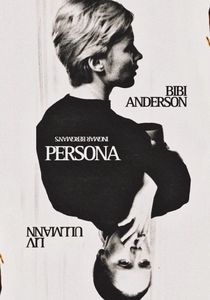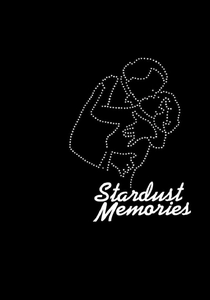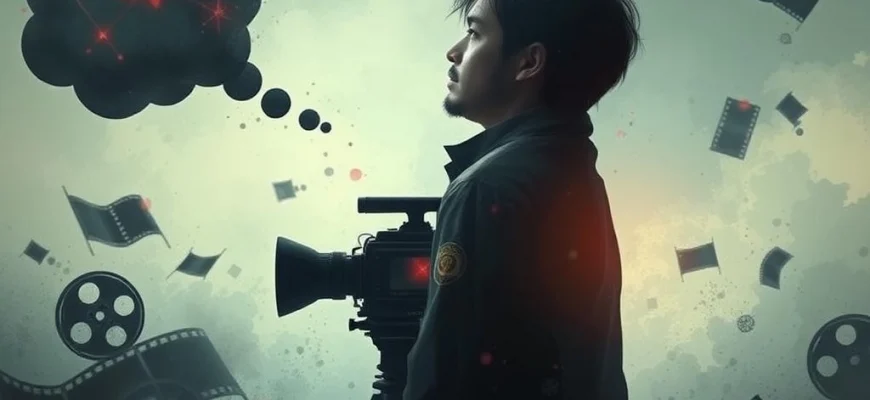If you were captivated by Federico Fellini's surreal masterpiece *8½ (1963)*, you're likely craving more films that blend dreamlike storytelling with deep introspection. This article explores 10 movies and shows that share *8½*'s themes of artistic struggle, existential reflection, and cinematic innovation. Whether you're a fan of meta-narratives or visually stunning films, this list will guide you to your next favorite watch.

The Seventh Seal (1957)
Description: A philosophical meditation on life, death, and faith, presented through a series of allegorical and surreal scenes. Its existential themes and stark visual style resonate with the introspective and surreal nature of the reference.
Fact: The iconic image of a knight playing chess with Death has become one of the most recognizable symbols in cinema history.
 Watch Now
Watch Now 
Last Year at Marienbad (1961)
Description: A film that challenges linear storytelling with its ambiguous narrative and dreamlike atmosphere. Its exploration of memory, time, and reality aligns with the surreal and introspective qualities of the reference.
Fact: The film's script was written in the form of a poem, emphasizing its lyrical and non-linear structure.
 Watch Now
Watch Now 
Juliet of the Spirits (1965)
Description: A visually stunning exploration of a woman's inner life, blending fantasy and reality. Its use of vibrant colors and surreal imagery mirrors the dreamlike and introspective qualities of the reference.
Fact: This was the director's first color film, and he used the medium to create a visually rich and symbolic world.
 Watch Now
Watch Now 
Persona (1966)
Description: A psychological drama that explores themes of identity, duality, and existential crisis through its fragmented narrative and surreal imagery. The film's experimental style and deep introspection mirror the introspective and dreamlike qualities of the reference.
Fact: The film was initially banned in some countries due to its controversial themes and imagery. It features one of the most analyzed close-ups in cinema history.
 Watch Now
Watch Now 
The Color of Pomegranates (1969)
Description: A poetic and visually arresting film that eschews traditional narrative in favor of symbolic imagery. Its dreamlike quality and exploration of artistic and spiritual themes align with the surreal and introspective style of the reference.
Fact: The film was heavily censored in its original release, with many of its scenes cut or altered by Soviet authorities.
 Watch Now
Watch Now 
The Discreet Charm of the Bourgeoisie (1972)
Description: A satirical take on the absurdities of social conventions, blending surrealism with dark humor. Its dream sequences and fragmented narrative echo the surreal and introspective style of the reference.
Fact: The film won the Academy Award for Best Foreign Language Film, despite its unconventional and often confusing narrative structure.
 Watch Now
Watch Now 
Solaris (1972)
Description: A sci-fi film that delves into the nature of memory, love, and human consciousness. Its slow, contemplative pace and exploration of existential themes resonate with the introspective and surreal style of the reference.
Fact: The film's haunting score was created using a combination of classical music and electronic sounds, adding to its otherworldly atmosphere.
 Watch Now
Watch Now 
Stardust Memories (1980)
Description: A meta-narrative that delves into the creative struggles of an artist, blending reality and fantasy. Its self-reflective nature and exploration of artistic disillusionment resonate with the introspective and surreal storytelling of the reference.
Fact: The film is often considered a semi-autobiographical work, reflecting the director's own frustrations with fame and artistic expectations.
 Watch Now
Watch Now 
The Sacrifice (1986)
Description: A deeply philosophical film that explores themes of faith, sacrifice, and the end of the world. Its slow pacing, long takes, and meditative tone mirror the introspective and surreal qualities of the reference.
Fact: The film was the director's final work, completed shortly before his death, and is often considered his spiritual testament.
 Watch Now
Watch Now 
Three Colors: Blue (1993)
Description: A deeply emotional film that explores grief, freedom, and identity through its minimalist storytelling and striking visuals. Its introspective tone and use of color symbolism align with the surreal and introspective qualities of the reference.
Fact: The film's use of the color blue is not just aesthetic but deeply symbolic, representing both freedom and melancholy.
 Watch Now
Watch Now 








